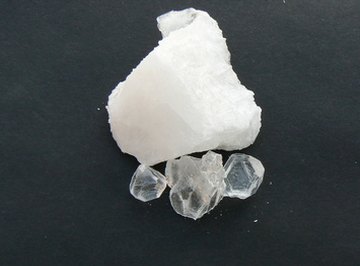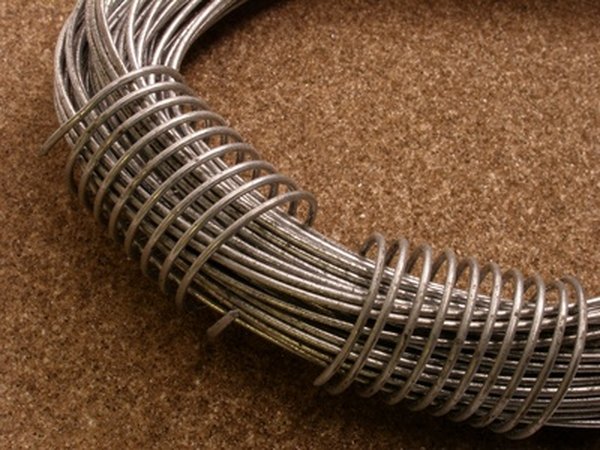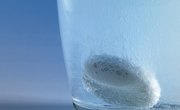
Defined as any substance with an orderly, geometric, repeating pattern, crystals may seem to be uniform in makeup and properties regardless of their components. While metalic and ionic crystals do share some similarities, there are definite differences between them as well.
Ionic Bonding
Ionic bonding occurs when elements either gain or lose valence electrons in order to become more stable. Elements such as sodium will usually lose an electron, resulting in a positively charged atom, while elements like chlorine usually gain an electron which allows the atom to become negatively charged. These atoms readily form a compound due to the strong electrical attraction.
Ionic Crystals

Ionic crystals usually form between elements from Groups 1 and 2 when combined with elements from Groups 16 and 17 on the periodic chart. Bonding is between the positive and negative charges of individual atoms with the resulting crystals consisting of positive and negative ions arranged in an alternating pattern of charges. This arrangement gives ionic crystals certain properties; in general they tend to have high melting points and are good insulators. They also are hard and brittle.
Metallic Bonding
Most metals have very few valence electrons in their outermost shells; metals also possess vacant electron orbitals just below their highest energy levels which results in some overlapping of vacant shells. Because of this, the electrons of metals tend to roam freely between the energy levels and do not belong totally to any one atom; this is often referred to as a "sea of electrons." Metallic bonding is the attraction between atoms and electrons in this "sea."
Metallic Crystals

While ionic crystals alternate positive charges with negative charges, metallic crystals contain atoms with the same charge surrounded by a sea of electrons. Since these electrons are free to move within the crystal structure, metals are good conductors of electricity and heat. In addition, it is this freedom of the electrons to move that allows metals to be both malleable and ductile: Since the bonding is the same in all directions, the atoms can slide past each other without breaking.
Other Properties
In addition to the properties already listed, ionic crystals will usually dissolve in water and other ionic liquids. Metallic crystals are insoluble in water. Metallic crystals also tend to be shiny and reflective, while ionic crystals tend to be more salt-like in appearance.
References
- Modern Chemistry; Raymond E. Davis et al; 1999
- Crystal Properties
About the Author
Carolyn Kaberline has been a freelance writer since 2006. Her articles have appeared in local, regional and national publications and have covered a variety of topics. In addition to writing, she's also a full-time high-school English and journalism teacher. Kaberline earned a Bachelor of Arts in technical journalism from Kansas State University and a Master of Arts in education from Baker University.
Photo Credits
salt image by Alison Bowden from Fotolia.com
